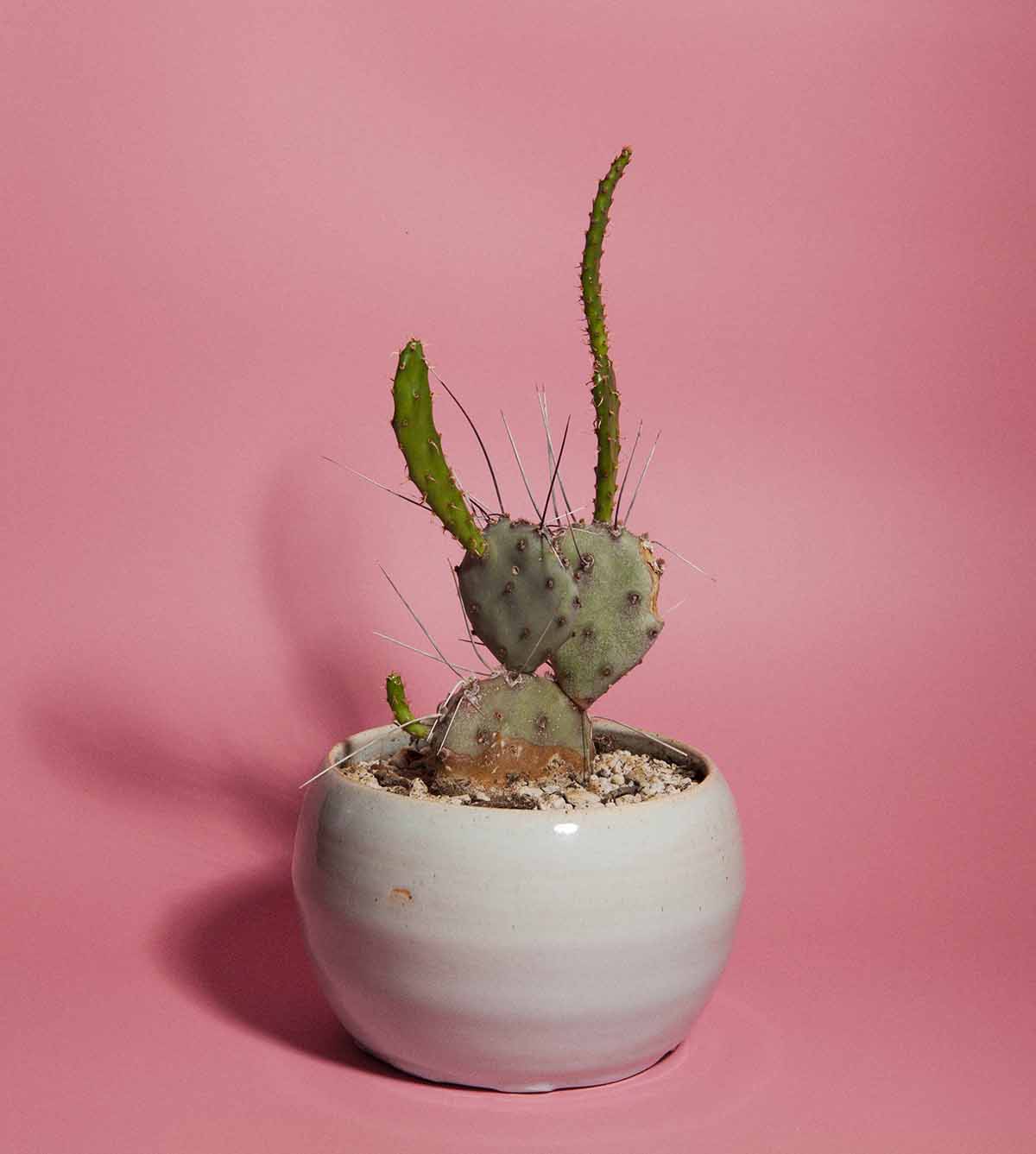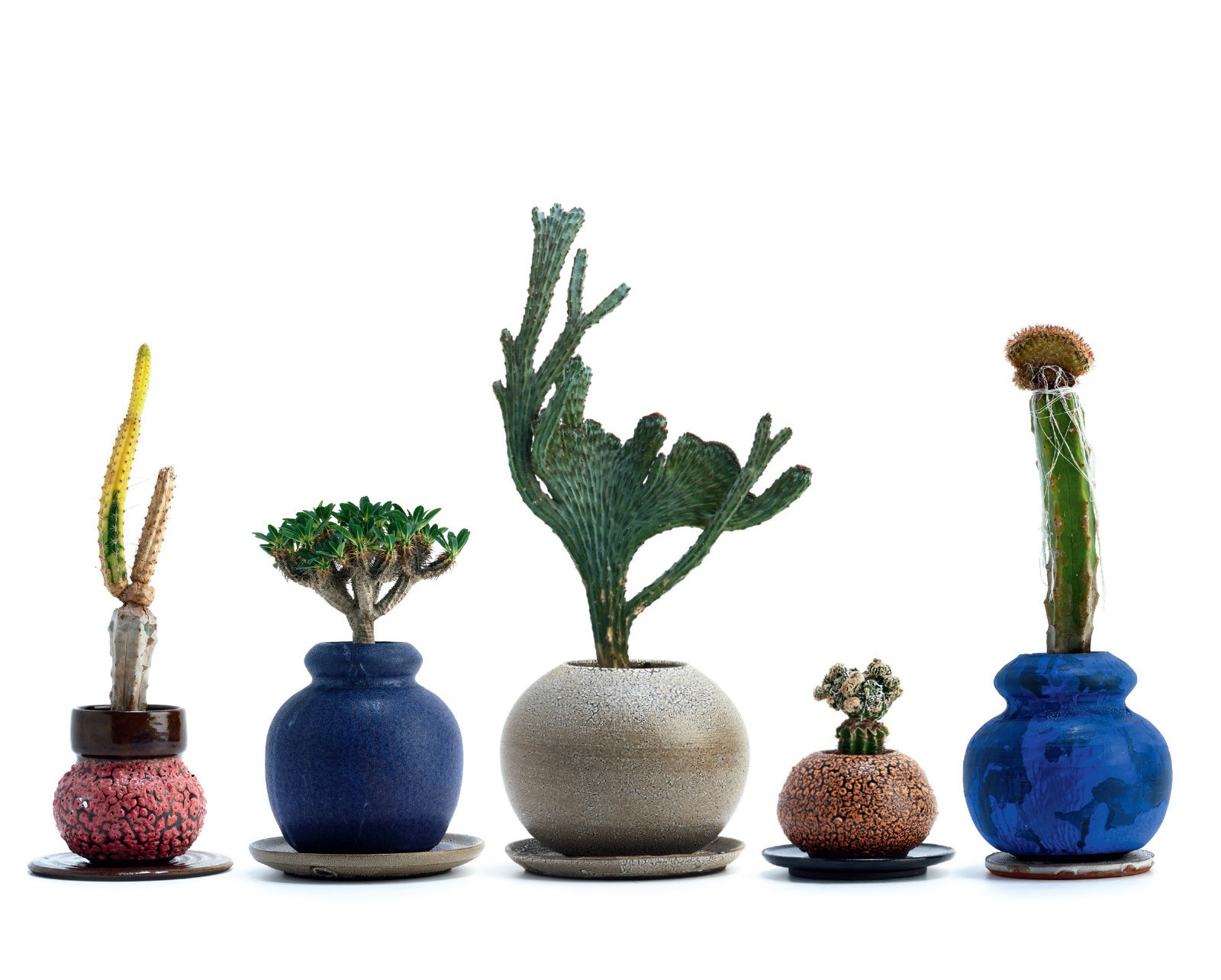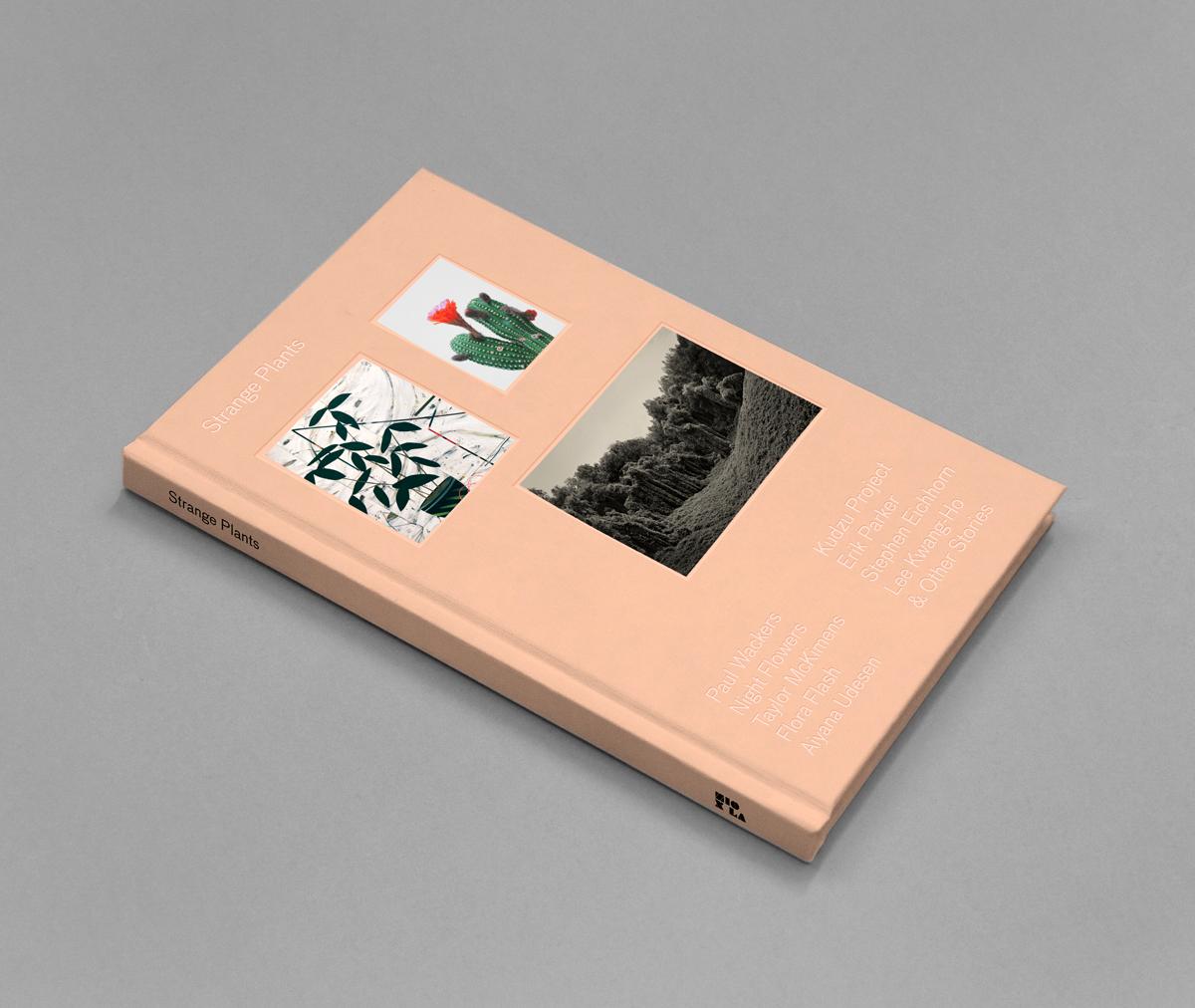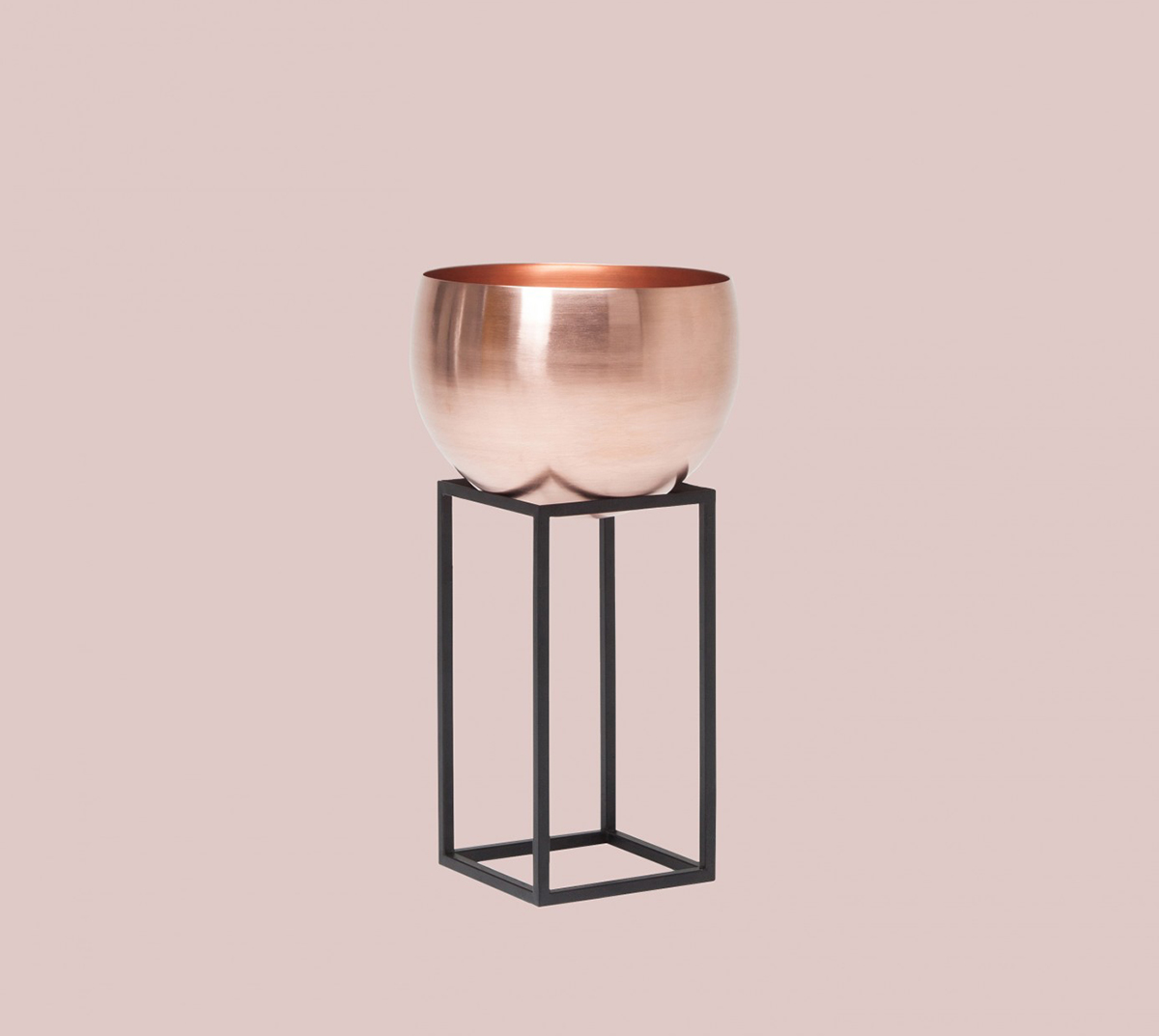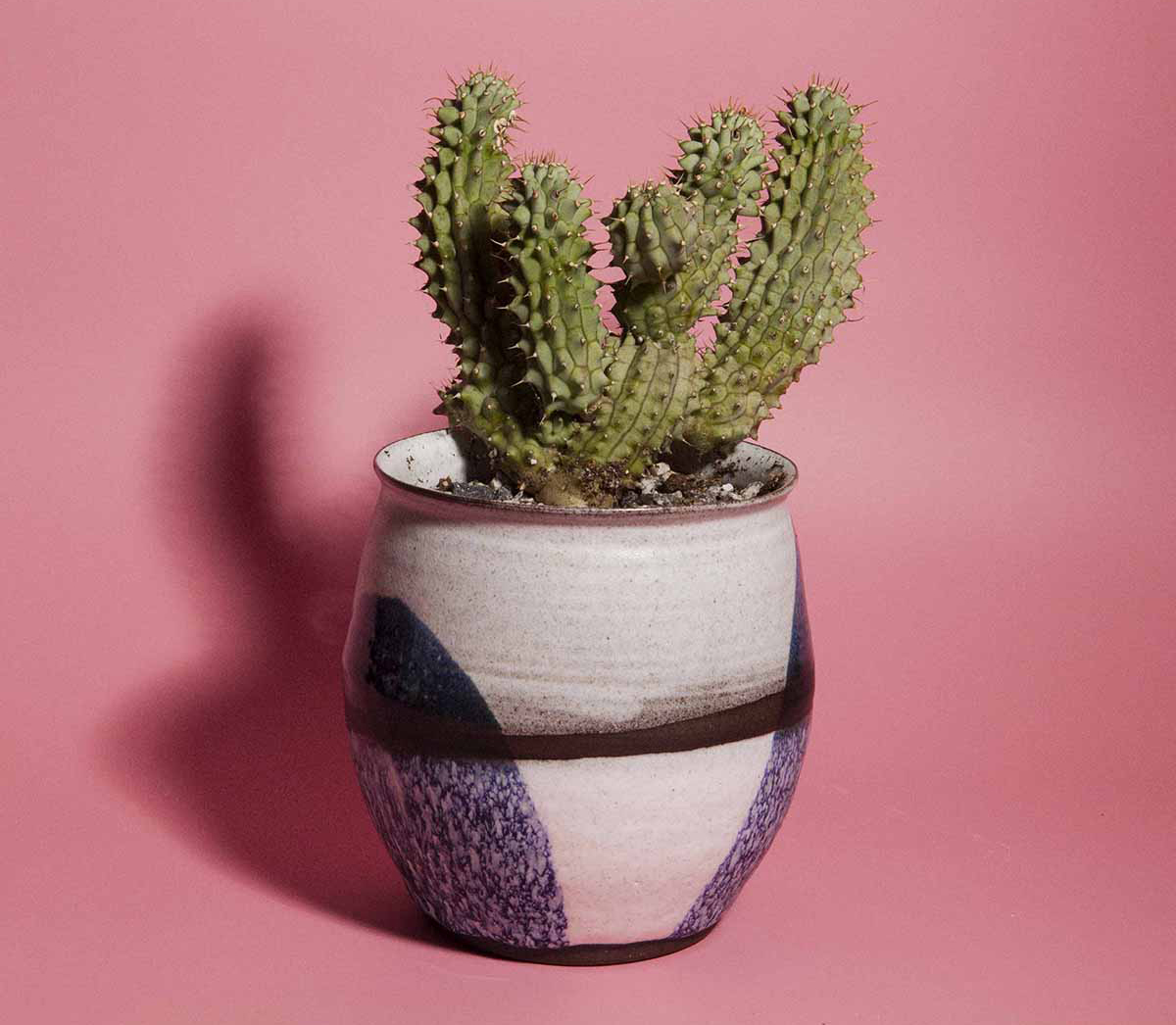
09.24.15
Q+A
David Haskell on His Psychotic Plants Show at Coming Soon
Ceramic exhibitions generally highlight the individual work or the skilled maker, but “Psychotic Plants,” opening tonight at Coming Soon — a shop in New York’s Lower East Side that’s part store, part installation — takes a different tack. New York-based editor and Kings County Distillery co-founder David Haskell has been collecting cacti and other succulents in his spare time for the past decade, and he’s also spent his Tuesday nights over the last two years cultivating his skills as a budding ceramicist. In search of the perfect pots for his handpicked plants, Haskell linked his two passions. Here, Haskell talks about how each plant inspired his wares (now available at Coming Soon) and gives a few expert tips on caring for cacti.
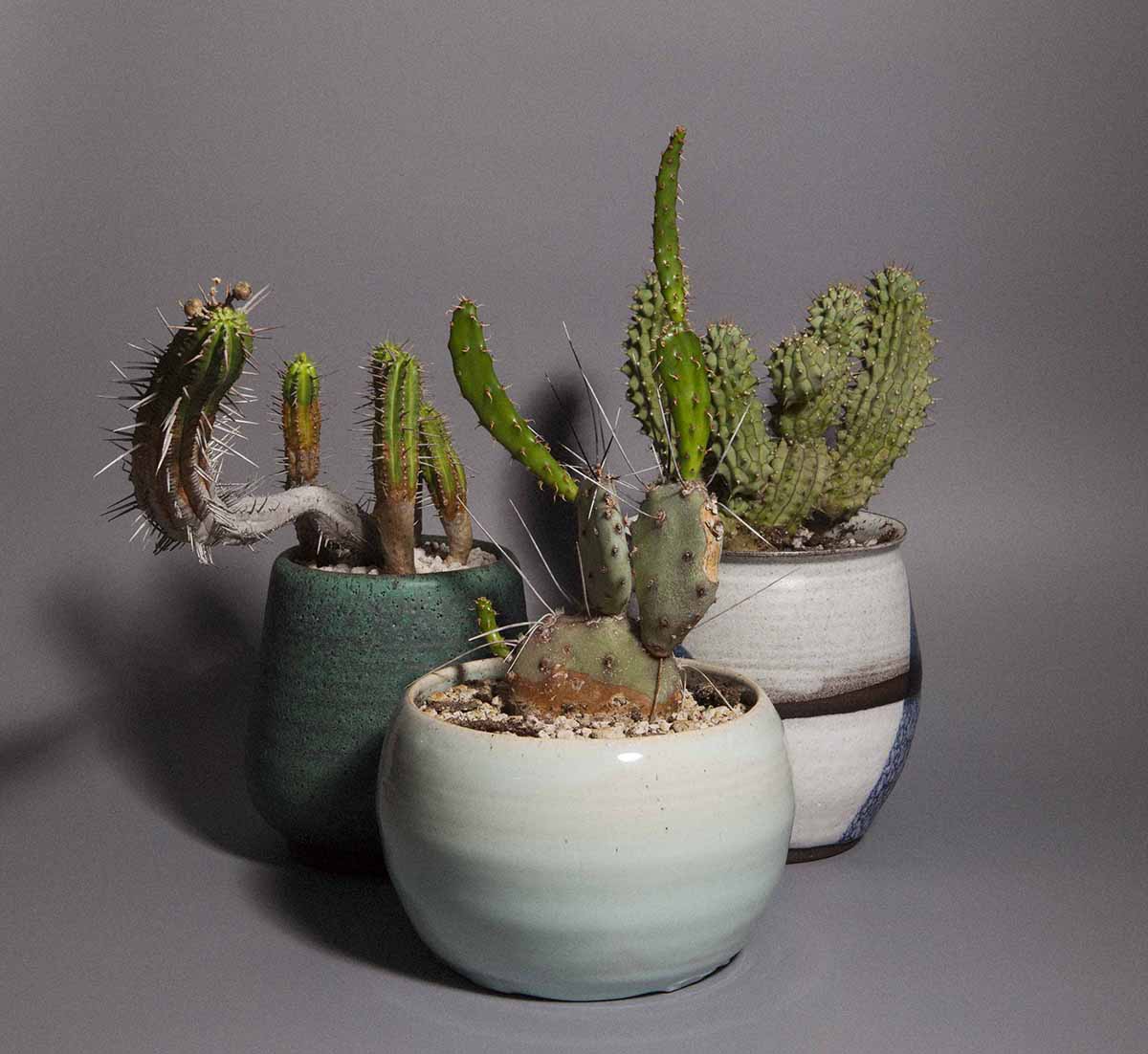
Tiffany Lambert: Can you talk about your interest in ceramics? How did you get into it?
David Haskell: The show is basically twin interests coming together — the plants and the pots. I did ceramics a lot when I was 15 and then 15 years later I was like, “Huh, that was really fun, maybe I could do that again.” [Laughs] So I started going to a studio near where I live and work and taking classes.
That’s at Chambers Pottery, right?
Yeah, a great relic of old Tribeca. I find wheel throwing incredibly relaxing and exciting at the same time. I like that it is very constraining. It’s not doing hand building where you can make anything but instead you’re trying to force a lump of clay into a form through a combination of the wheel moving around and your hands pushing it. I find that really liberating. So I’ve been taking a class every Tuesday night for the last couple years and going on weekends to do my own work. I have a full time job and also a secondary job so it’s a break from everything else. Both the other things I work on are collaborative and this one is not. I certainly get a lot of advice from my teacher Mark Davies and I go to class with one of my friends, so we get to bounce ideas back and forth. But for the most part it’s just me and the wheel. That is a nice complement to everything else that I’m doing.
Which is a lot — you work full time at New York Magazine and then also a partner at Kings County Distillery.
Right, I’m deputy editor at New York Magazine. The Distillery started as a hobby, a collaboration with my friend from college, Colin Spoelman. We were just teaching ourselves how to make whiskey together and then we decided to cross the line and legally do what was illegal as a home distiller. When it started it was really small, a tiny distillery in Bushwick and then we grew it into an official business. Now we’re in the Navy Yard. Collin works there full time and is the CEO of the company. He and I together manage the future planning and strategic questions.
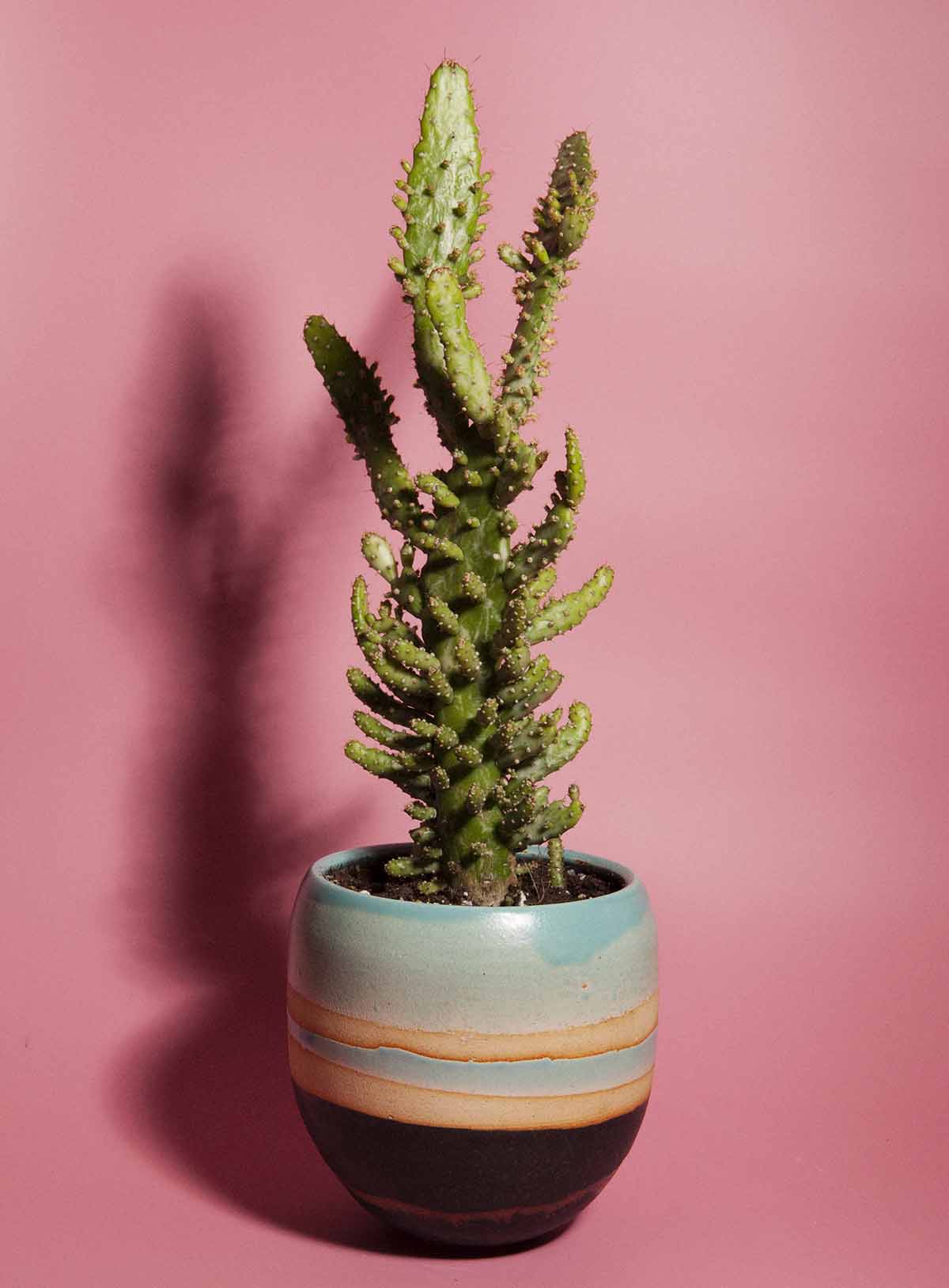 Where do you look for inspiration? Are there other ceramicists, past or present?
Where do you look for inspiration? Are there other ceramicists, past or present?
A couple years ago Mark Davies, my ceramics instructor, pointed me to Claude Conover, who worked with a very limited palette and made very simple forms but found a way to make all of his pieces soulful and expressive. That night I dived deep into a Google-image search and started imagining what it would be like to slice into Conover pots in order to plant cacti in them.
Do you find the plant first and then use that as inspiration to create the ceramic form?
I try to make the project really about using ceramics to house plants. Once it’s narrowed to that, the plants themselves become the inspiration for the pots. Sometimes directly. I buy a plant that I think is really cool and I start thinking, “What would be the right vessel for it?” More than that, once you start thinking about the pots as objects that are not for the kitchen and not art objects, but fundamentally to support the plant, then that gets my mind going. If the plant is always the sculpture and the pot is always the pedestal, then what can you do with that? That’s always the relationship but there’s not always an implied hierarchy. Sometimes the pot is meant to play a supportive role and other times I want the combination to be really all about the ceramics and let the plant be an accent on top of it. But it has some functional needs; it needs to hold the plant and to deal with water and soil. It’s about taking something from the wilderness and bringing it to an apartment in New York City. I’m always thinking, “How much am I trying to mimic a natural form and how much am I playing against that?”
I have two cacti that do the most weird, unpredictable things. One of them once broke off at the top and then simply kept growing out of its side. So it’s really interesting to think about the changing personalities of these plants over time.
Totally, that’s exactly what I’m drawn to. I’m always interested in older plants rather than younger plants because as they age they express their experience and history in their form. Plants are always making choices based on circumstances and those choices add up to how it grows. And that’s true of a tree in central park or a whole forest in Maine. But desert plants — cacti and other succulents — are particularly interesting because they have a wider range of expressions. They can really do weird things. The title of the show, “Psychotic Plants,” came to me when I was explaining what I like about plants to my stepfather who’s a psychiatrist. That whole idea of personality being mapped onto the physicality of the plants is something I’ve been enjoying playing around with.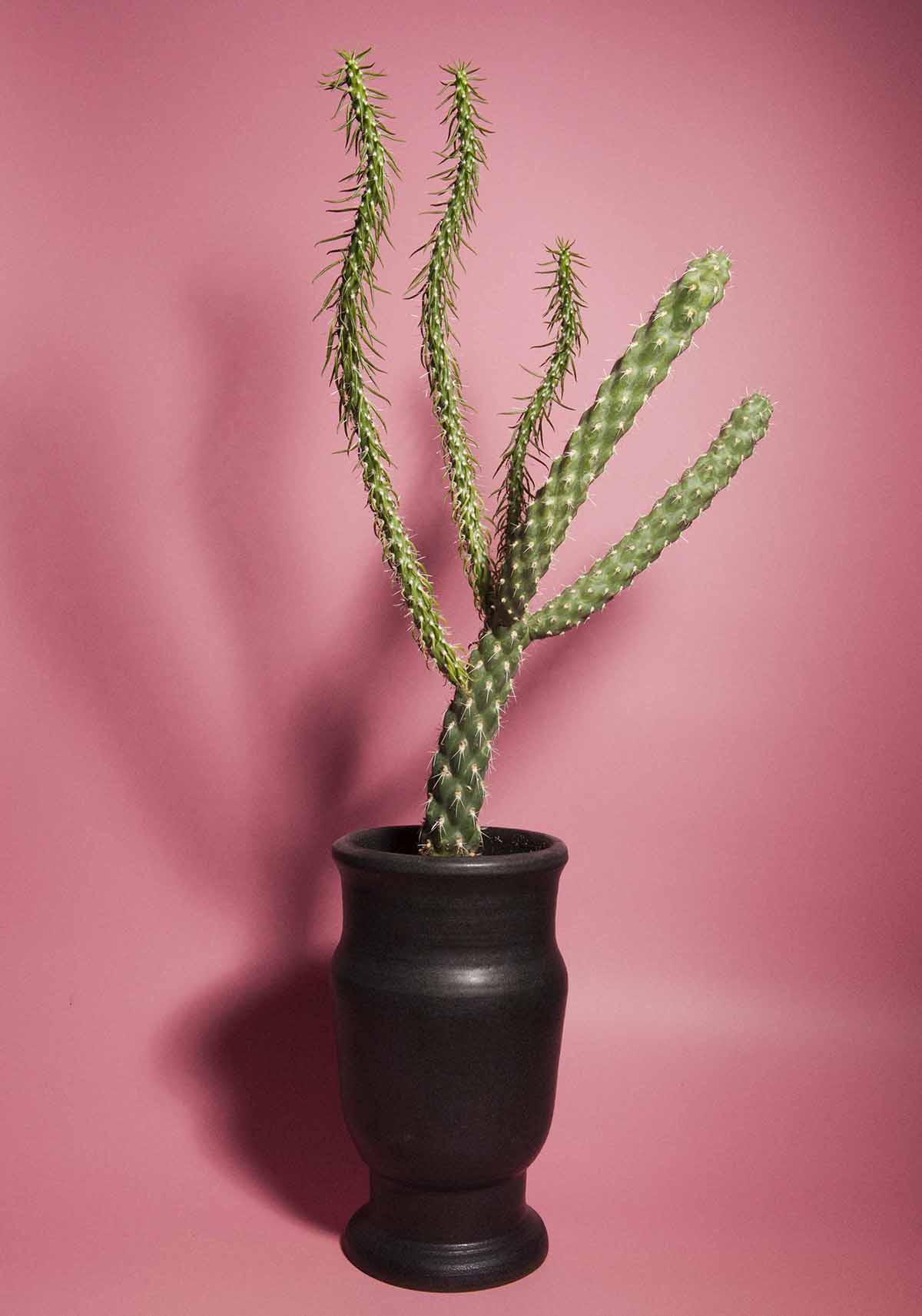 I also see a relationship between the durability of both the cacti and the ceramics, and also a sense of their fragility.
I also see a relationship between the durability of both the cacti and the ceramics, and also a sense of their fragility.
One thing about cacti that’s interesting to me is that they thrive in the desert but paradoxically they do really well in urban environments. They’re very accommodating to a New York City apartment and very forgiving if you go away for a week. They’re really strong in that respect. They have to be strong to thrive where they naturally thrive and they’re able to also exist in the city. A part of their strength and durability is that they can be very hostile and aggressive and prickly and unfriendly and, as I see it, kind of masculine and threatening —all of which I find really interesting. I’m not trying to make a lot of little moves with my ceramic pieces. I think that they work best for me when they’re simplified into a few big moves. Whether that’s glazing choices or just structural and formal choices. I’d rather see a cactus or succulent that’s fairly busy in its shape and texture complement a basic ceramic pot as opposed to one that’s highly decorated.
How do you select the colors for the glazes? Are they all glazed? Do you have any that are unglazed?
Most of them are glazed and I’m choosing among the glazes that we have available to us in the studio. I find myself drawn to a pretty limited palette. Recently, I’ve been drawn to the glazes that are matte and that are fairly volcanic. There’s one that’s more turquoise and one that’s called jade so it’s more green and they both bubble up a lot and so there’s a little bit of texture to the glaze itself. The ones that aren’t glazed are mostly ones that I’ve been working with porcelain inlay. Those are the ones with the white stripes. The clay I’m using is this fairly dark brown clay and it’s really beautiful unglazed. With a few of them I’ve been carving in stripes of porcelain strips, which come out bright white and that seems to be enough color by itself. It doesn’t need glaze on top of it.
I’m curious to know more about your technique. By what method are they fired?
Everything is thrown on a wheel with a clay that is fired twice. The first time is a disc firing at a relatively low temperature. Then afterwards you glaze it, if you are going to glaze it. Mostly I’m dipping because that is conducive to very simple, strong lines. Then it’s fired again. The pieces are almost all fired through a Cone-5, which is a mid-range firing using an electric kiln.
Let’s talk cacti. How did you start collecting them?
My husband and I like to travel to a lot of national parks both in the states and in Columbia where he’s from. For the last decade part of our traveling and tourism has been about local plant life. We just covet them and want to take them home. That’s impossible when you’re down in Columbia because of customs restrictions but it’s doable in the U.S. Some plants do better than others in a New York City environment. We go to California a couple times a year, sometimes to San Francisco, L.A., and often in the Desert Hot Springs, Palm Springs area and there are various nurseries that I like to hit up as part of our routine. You can fit a surprising number of cacti into a carry on bag. [Laughs]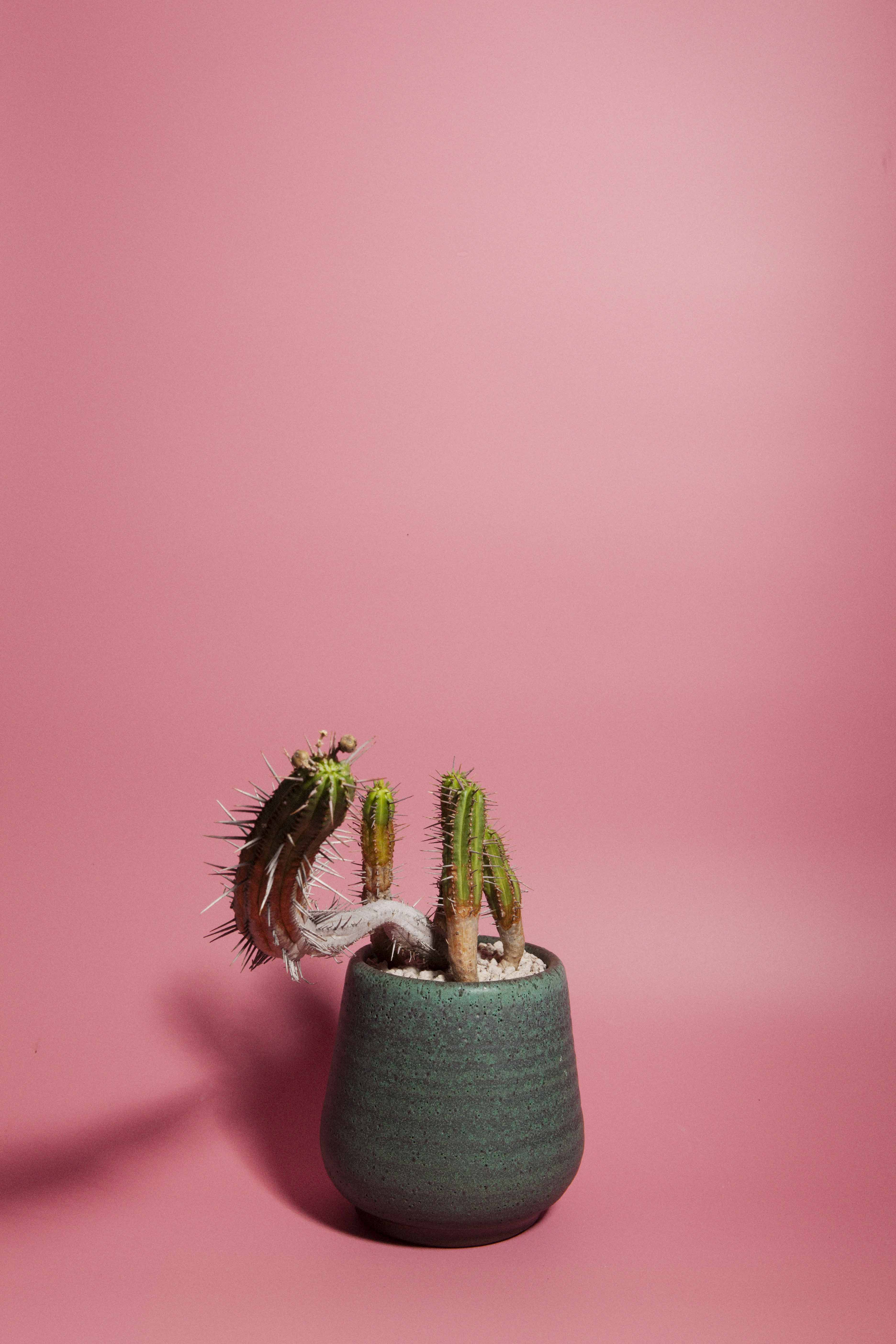 I wanted to know how you go about transporting these things.
I wanted to know how you go about transporting these things.
Carry on is the way to go. More often than not the TSA people at security are on board. If you’re not allowed to bring a nail clipper onto your flight, I was worried about whether they’d let me bring these prickly cacti. But they’re always cool with it and I get to go in a separate line outside of the X-Ray and they’re all cheering me on and giving me plant tips. A lot of what’s in the show I brought back in the overhead compartments. But I’m on the lookout everywhere. New York sells a poor variety of cacti and succulents so it’s not that common that I’ll see one that I haven’t seen before but if I do I’ll try to grab it. Usually around Chinatown or on 28th Street. There are some greenhouses out on Long Island that I’ve gone to once or twice. There is a New York Cactus & Succulent Society that I discovered and went to.
Are you a member?
They do have a membership for a few dollars and you’re entitled to attend meetings. The regulars are fairly old. I think by the time you are a member of the New York Cactus & Succulent Society you have way too many cacti and succulents. The meeting I went to ended with a cactus share where everybody was bringing cuttings or fully developed plants to give away. One of the plants for sale at Coming Soon comes from the President of the New York Cactus & Succulent Society who is a great inspiration. He joined the Society when he was 8 years old. He’s now in his 60s. He has greenhouses at his mother’s house in Queens that have untold numbers of cacti and he brought a very unusual aloe plant to the meeting. I was the one with the lucky straw that was able to grab that one.
That’s so fascinating. I’d love to read a short origin story about each of your pieces.
When I came back from the Society meeting I started a Craigslist news alert because I realized that there is a dilemma when you’re moving or your spouse just died or life circumstances force you to get rid of a cactus that you’ve had for many, many years. You certainly don’t want to throw it away; you want someone to adopt it. To me, that’s such a preferable experience to buying a younger plant at a nursery. So every now and then something pops up and I debate whether or not to drive to Bridgeport, Connecticut to pick up a 23-year old saguaro cactus.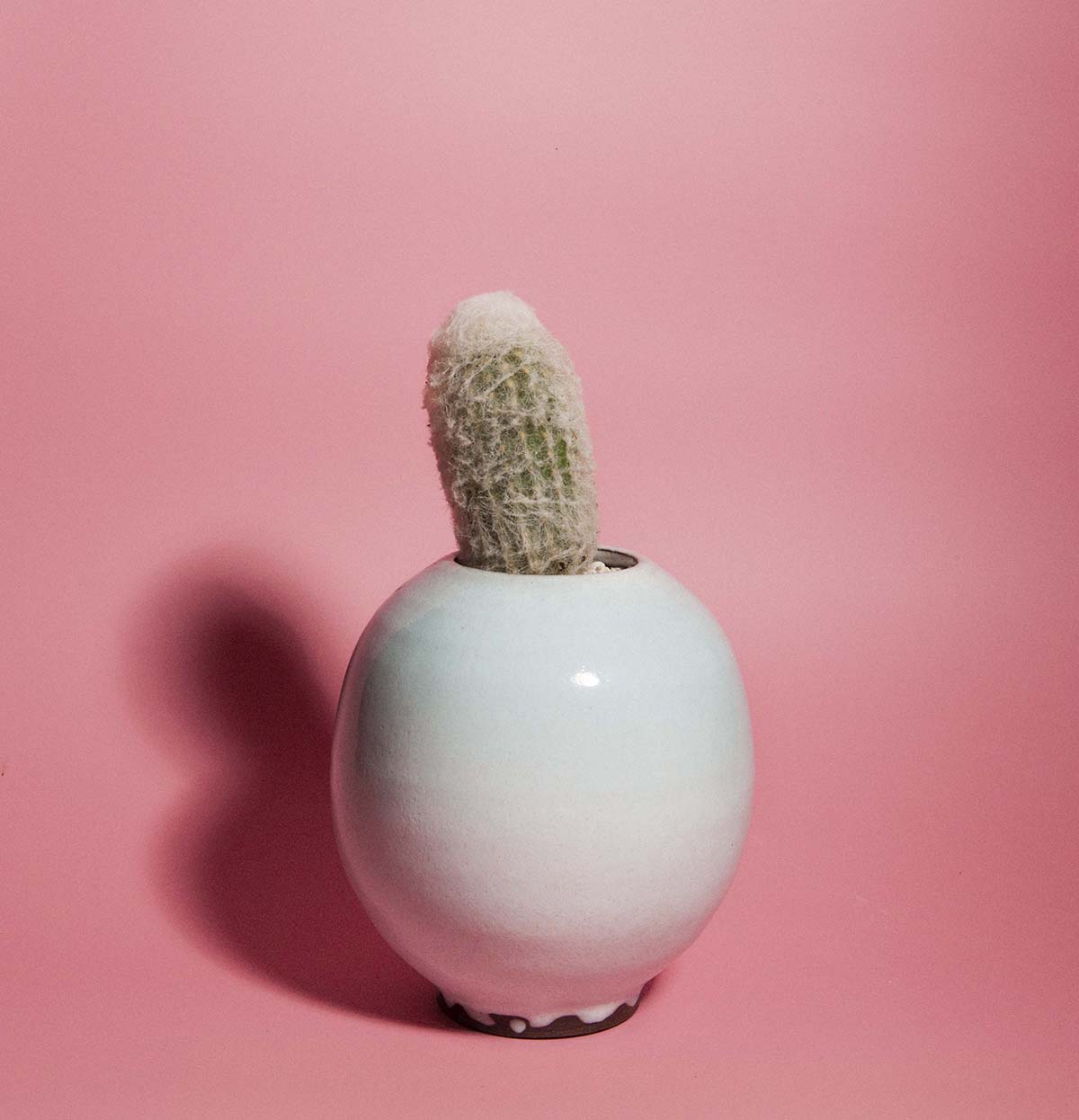 Yes please. Definitely.
Yes please. Definitely.
I did that once. I met my mother who lives out in Connecticut and we drove out to this retired professor’s house and picked up the cactus.
Have you been to the Brooklyn Botanical Garden? They have this desert pavilion there.
Yeah, it’s great and the New York Botanical Garden has an even bigger one. I think that if I wanted to up my game I would start attending these plant shows because each state has one. It’s a whole world. Connecticut has a really celebrated one, and so does New Jersey. I’m sure New York does. At the Cactus & Succulent Society meeting they were talking about these shows and that’s where collectors go. You really can get some mature, unusual species of cacti.
What’s your top advice for caring for a cactus?
My general rule of thumb is water them once a month and if they can’t take that schedule then let them go. Mourn them and move on. I think a lot of people are convinced that they can’t take care of plants because a plant died on them. I would just tell them that’s life and get back in the saddle. Some aren’t going to make it. Most cacti and succulents can handle a once a month watering. Generally, water less rather than more. If they can live outside in the summer, definitely do that because then they’ll have a real growing season.